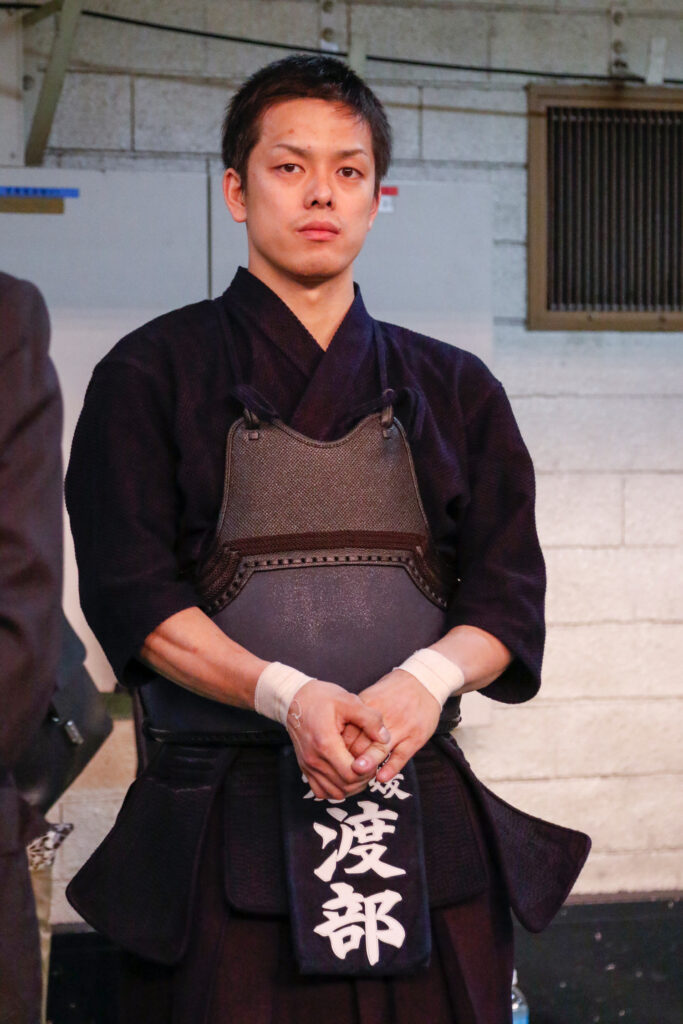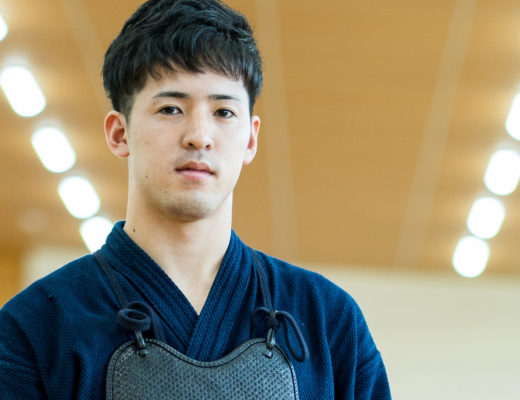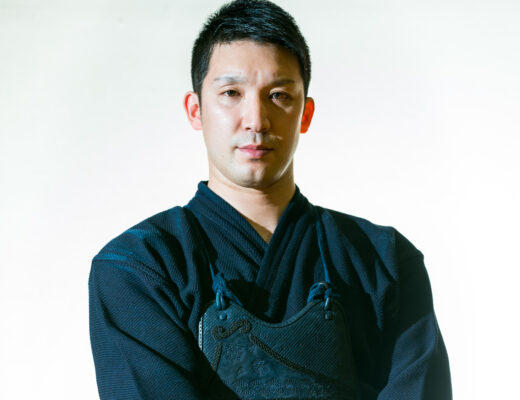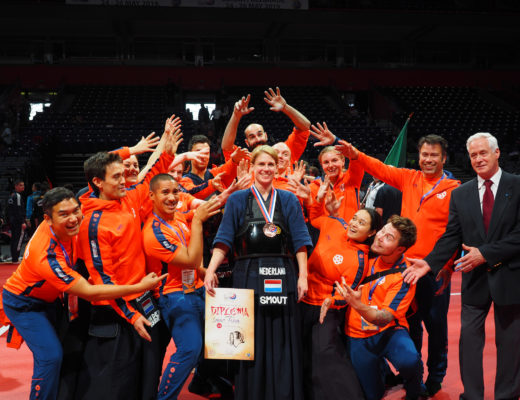2021.8 KENDOJIDAI
Translation: Anne Zwart
Perceiving movement in the body and mind

Ready to strike through posture
Stay aware of the left side of your body in Kamae
Okori is the moment when your opponent stirs to make a move. A typical followup to this is to strike Debana the second your opponent is about to go for a technique. The time window for these opportunities is incredibly small; you will be too late if you try to strike after visually processing that your opponent is about to strike. To be able to grasp Okori, you have to feel the Okori within the other and be ready to strike as the other person is about to strike.
I think that every Kenshi’s understanding of Okori is different. I will be explaining what I personally remain aware of while practicing in order to understand Okori within the opponent.
First, it is necessary to maintain a posture that allows you to always be ready to strike. Even if you are able to feel the opponent’s Okori, you cannot respond adequately if you are not in a physical position to strike, and even if you are able to strike, it will not be a point.
As I take up Kamae, I consciously maintain a line between my left hand, left hip and my left foot. My left hand holds the Shinai firmly, my Kamae is in the center, and my left hip and left foot are always pointed at the opponent. If your left hip or left foot are directed elsewhere, you lose jumping capacity and your posture will fall open as you strike. I find that if your left hip and left foot are pointed at the opponent, you can easily jump from wherever you are and you can maintain proper posture even after your strike.
I keep my point of gravity slightly ahead of the middle. For me, this is a stable position and it allows me to quickly respond to my opponent’s Okori. From this position, I make sure I don’t lift my left heel too high when striking; if I do, my knee gets bent and my strike loses vigor. To combat this, I place my weight at the top middle of my arch instead of the very front of my foot.
Constant and swift Ashisabaki is another focus point for me. I make sure the tips of my toes don’t float away from the floor, and make my movements from my knees. I keep my hips at the same height constantly so I can respond to my opponent’s Okori quickly.
When I strike, I start the movement from the lower half of my body. If I panic and hit solely with my hands, I break my posture and my strike loses power.
I also always make sure to make strong Fumikomi and draw my left foot in fast when striking. This is because a strong Fumikomi at the right timing intensifies your strike. Then, drawing in your left foot fast after a strike will help you maintain proper posture.
Staying ahead in Keiko matters
Creating good circumstances for a valid point
The rest of this article is only available for Kendo Jidai International subscribers!





